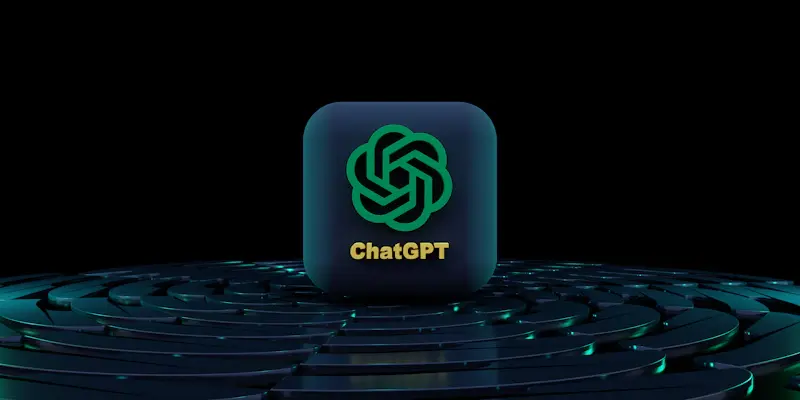Imagine a world where artificial intelligence can engage in conversations as smoothly and naturally as humans, bridging gaps in various fields from education to customer service and creative industries. OpenAI’s latest breakthrough, ChatGPT-4, is making this vision a reality through its superior understanding and generation of human-like text, transcending the capabilities of its predecessors.
Advanced Multimodal Communication
Broadening Application Across Sectors
One of ChatGPT-4’s standout features is its ability to handle multimodal communication, which means it can integrate and interpret text alongside images and other data types, vastly expanding its usability. In education, for instance, this allows the AI to assist as a personalized tutor, seamlessly providing textual explanations augmented with visual aids, thereby significantly enhancing the learning experience. Students can ask questions and receive detailed answers with relevant imagery, which helps in better understanding complex concepts.
In customer service, ChatGPT-4’s multimodal capabilities transform interactions by providing detailed descriptions of products, including visuals, which improves customer engagement. If a customer seeks information about a particular product, the AI can offer both textual information and relevant images, making the interaction more informative and effective. This capability is particularly beneficial for online retailers where visual context is crucial for buying decisions. In the creative sector, ChatGPT-4 can merge text and visual storytelling, enabling creators to produce more comprehensive narratives and artistic outputs.
Enhancing User Experience
Multimodal communication also means ChatGPT-4 can better contextualize conversations by interpreting visual cues along with textual inputs, making the interaction feel more natural and intuitive. This improvement is evident in scenarios where understanding the context is key, such as interpreting a customer’s mood or identifying relevant visual content during a conversation. The combination of text and image not only enhances comprehension but also makes interactions more engaging.
Furthermore, this capability positions ChatGPT-4 as a versatile tool adaptable to various professional and personal applications. For example, healthcare professionals can use the AI to provide patients with detailed explanations of medical conditions, supported by visual aids, which can simplify complex medical jargon. In collaborative business environments, teams can leverage ChatGPT-4 to integrate data from multiple sources, including images and documents, making it a comprehensive assistant for diverse tasks.
Ethical Considerations and Challenges
Importance of Responsible AI Deployment
As ChatGPT-4’s cutting-edge technology becomes more integrated into daily life, ethical considerations come to the forefront. OpenAI emphasizes the importance of deploying AI responsibly, with a strong focus on transparency, user privacy, and combating misinformation. Given the model’s advanced capabilities, it is crucial to ensure that it does not become a tool for generating harmful or deceptive content. Transparency in how the AI makes decisions and processes information is key to maintaining trust among users.
User privacy remains a paramount concern, as ChatGPT-4’s sophisticated interactions often involve handling sensitive information. OpenAI has established rigorous data privacy measures to protect user data and ensure that interactions remain confidential. These measures include robust encryption, secure data storage, and strict access controls to prevent unauthorized data usage. By prioritizing user privacy, OpenAI aims to foster a secure environment where users can engage with AI without concerns.
Combating Misinformation
Another significant ethical challenge is the potential for AI-generated misinformation. With its advanced text generation capabilities, ChatGPT-4 could be misused to spread false information or create misleading content. OpenAI has implemented various safeguards to mitigate this risk, including enhancing the AI’s ability to fact-check and identify false information. Additionally, efforts are being made to train the model on diverse datasets that reflect accurate and reliable information, thus minimizing bias and promoting balanced perspectives.
These ethical considerations underscore the commitment to deploying AI technologies in ways that benefit society. By focusing on responsible AI use, OpenAI ensures that ChatGPT-4’s powerful capabilities are harnessed for positive and constructive purposes. This approach not only sets a standard for future AI developments but also builds a foundation of trust and reliability, which is essential for widespread adoption and integration into various sectors.
Future of AI Integration
Market Demand and Application
Market trends indicate a rising demand for sophisticated AI models like ChatGPT-4, especially in fields such as healthcare, where detailed and empathetic patient interactions are crucial. The ability to seamlessly integrate multimodal insights enhances the quality of care by providing comprehensive information and support. Healthcare providers can leverage ChatGPT-4 to improve patient consultations, offering a mix of textual advice and visual aids to explain diagnoses and treatment options more effectively.
The adaptability of ChatGPT-4 enables it to integrate smoothly with existing digital ecosystems, facilitating adoption without significant infrastructural changes. This design ensures that businesses and organizations can implement the AI’s capabilities without disruptive overhauls. In the tech industry, for instance, ChatGPT-4 can be embedded into customer support platforms, enhancing service efficiency and customer satisfaction with minimal adjustment to existing processes.
Transformative Impact on Industries
Imagine a world where artificial intelligence effortlessly engages in conversations, as seamlessly and naturally as humans do. Picture an AI so advanced that it can fill roles in a wide range of fields, from education and customer service to the creative arts. OpenAI’s latest milestone, ChatGPT-4, is turning this dream into a tangible reality. This new generation of AI showcases a remarkable ability to understand and generate human-like text, surpassing the achievements of its forerunners. ChatGPT-4 stands out not only for its conversational prowess but also for its potential to revolutionize various industries by enhancing communication efficiency and effectiveness. Whether it’s personalizing educational experiences, improving customer interactions, or aiding creative processes, ChatGPT-4’s capabilities are reshaping our interaction with technology. Its advanced natural language processing is closing the gap between human and machine communication, opening doors to innovative possibilities and making a significant impact across diverse sectors.

